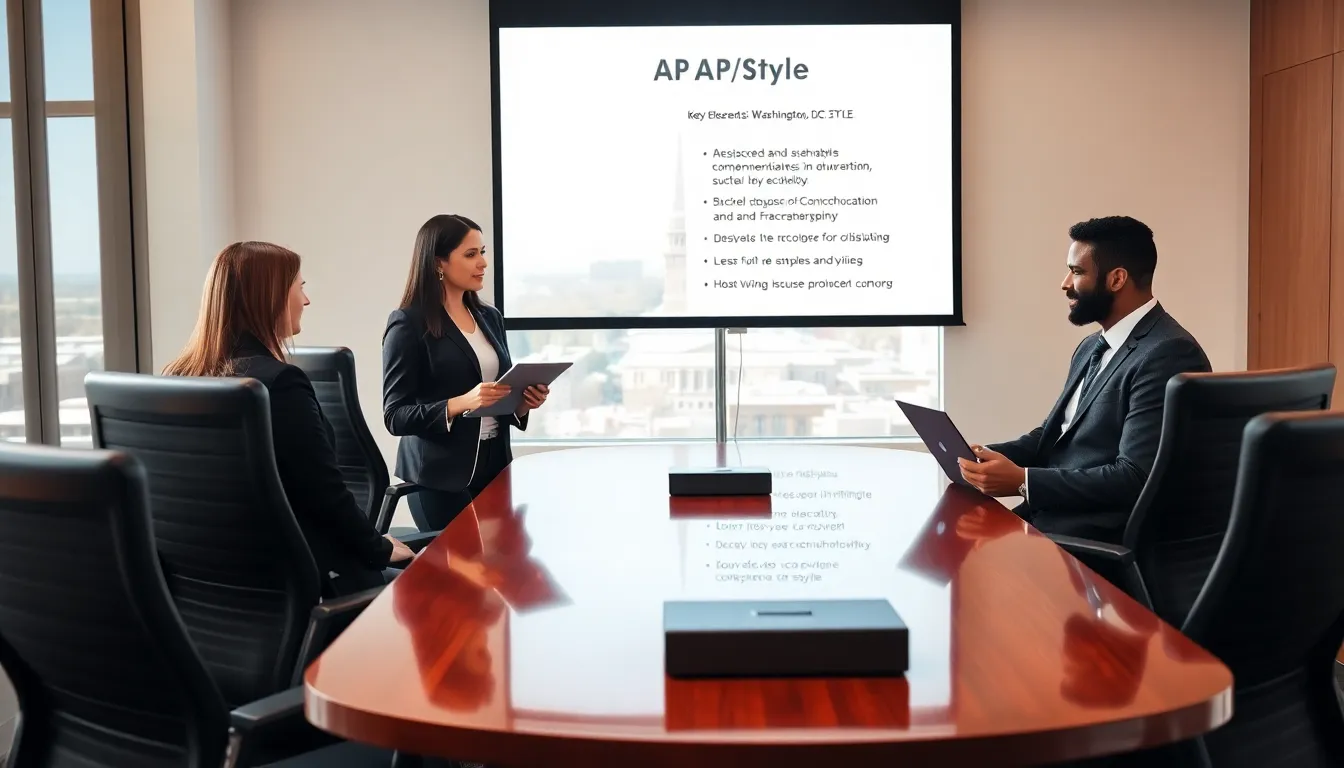Ever tried writing about Washington, DC, and ended up tangled in a web of abbreviations and punctuation? You’re not alone. The Associated Press (AP) Stylebook is a game-changer for journalists and content creators aiming to clarify their writing, not just for clarity, but also for credibility. It’s like the Swiss Army knife of writing: once you know how to use it, the possibilities are endless. So, buckle up. Let’s jump into the essential parts of AP Style tailored for the unique context of Washington, DC, prepare for clarity with a dash of style.
Table of Contents
ToggleUnderstanding AP Style Guidelines

AP Style provides a rigorous framework for journalists and writers alike. This guide is revered for its simplicity and effectiveness, focusing on clarity, brevity, and accuracy. Writers who adhere to these guidelines not only make their pieces more readable but also bolster their credibility. Especially when writing about the political and cultural complexities of Washington, DC, it’s essential to follow these rules closely. Understanding the core principles of AP Style allows for upcoming sections to make more sense as they pertain to various contexts and specific topics.
Key Elements of AP Style for Washington, DC
Punctuation and Abbreviations
In AP Style, punctuation serves a critical role in ensuring clarity. Commas, periods, and question marks should be used judiciously to avoid confusion. For instance, while serial commas can be great for lists, AP Style dictates against them except for complex lists. As for abbreviations, when referring to Washington, DC, it’s important to note that ‘D.C.’ should always include periods as it stands for District of Columbia, but, it can be used as ‘Washington’ in subsequent references.
Using Full Names and Titles
When mentioning organizations, agencies, or titles, AP Style recommends spelling them out on the first reference. For example, the first time one mentions the Federal Bureau of Investigation, it should be spelled out in full. After that, feel free to use the acronym FBI. This ensures that readers are well-informed without overwhelming them with acronyms at the outset.
Addressing Entities and Organizations
Washington, DC, is home to numerous organizations, each with its own nuances in names and titles. For instance, when referring to governmental entities, terms like ‘Senate’ or ‘House of Representatives’ should always be capitalized. Also, when mentioning the U.S. Congress, don’t forget that it includes both the Senate and the House of Representatives, this distinction is vital for clarity. Just as critical is the treatment of political titles and roles. For example, always capitalize titles when they precede a name, such as ‘President Biden.’ But, when used generically, you’d write ‘the president’ and leave it lowercase. These variances may seem trivial but mastering them elevates the professionalism of any written piece.
Common Mistakes and Misconceptions
Even seasoned writers often trip over a few common pitfalls. Misusing titles is a frequent ongoing issue. Always ensure you’re using the correct title for the context. Another common mistake involves geographical references. For instance, when mentioning the city in text, one must refer to it as Washington, D.C., not Washington, DC. Failing to recognize this could lead to confusion, especially for readers outside of the United States who might be less familiar with these conventions. Also, it’s essential to remember that AP Style avoids unnecessarily lengthy phrases. Instead of saying ‘in the United States of America,’ AP suggests simply ‘in the U.S.’, so saving space and improving clarity.
Practical Applications of AP Style in Washington, DC
Applying AP Style is not solely reserved for news articles: it’s invaluable for a variety of formats. Whether crafting press releases, government documents, or scholarly articles, following these guidelines boosts credibility and aligns with professional standards. For instance, a press release for a new policy would require meticulous adherence to AP Style to ensure clarity and promote public understanding. Also, knowing how to effectively cite sources per AP Style can save you from potential pitfalls later. Utilizing AP’s standards across different mediums not only enhances the writer’s authority but fortifies the accuracy of the information presented.










